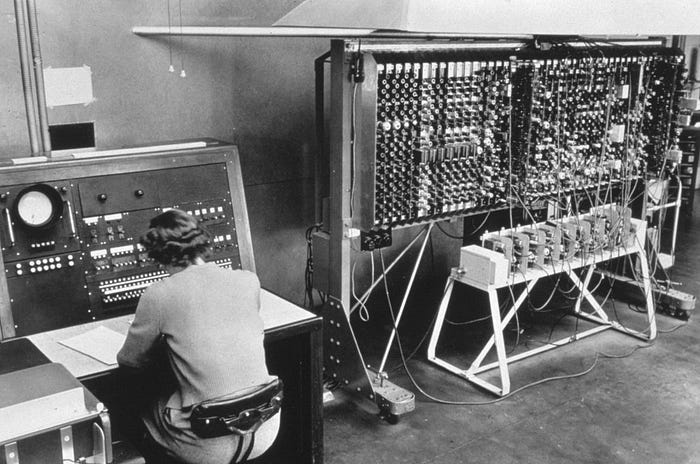Avi Loeb

In 1949, Alan Turing came up with the imitation game, a test of a machine’s ability to show artificial intelligence equivalent to that of a human. In the corresponding Turing Test, a human interrogates a subject through a set of questions and answers. If the evaluator cannot distinguish a machine from a human, it is concluded that the artificial intelligence of the machine has passed the Turing Test.
It occurred to me that an interstellar object with anomalous properties, like 3I/ATLAS, could be the Turing Test of humanity’s natural intelligence by some superior alien intelligence. It is well known to any interstellar traveler that there are plenty of icy rocks in planetary systems. These constitute the leftover building blocks from the construction process of the planets. For that reason, an alien might assume that any intelligent observer on Earth must be familiar with space rocks as they impact the Earth on a regular basis. Not so fast.
The German physicist Ernst Florens Chladni was first to publish in 1794 the idea that meteorites might be rocks that originated not from Earth, but from outer space. He compiled all available data on several meteorites and concluded that they must have their origins in space. The scientific community of the time responded with resistance and mockery. It took nearly a decade before a general acceptance of the origin of meteorites from space was achieved, primarily after the French scientist Jean-Baptiste Biot collected data and testimonies on the fall of thousands of meteorites in 1803 from the skies of L’Aigle, France.
Although initially ridiculed as nonsensical by the scientific establishment, the notion that rocks exist in outer space was eventually accepted as true. This change in mindset is a mark of intelligence. Science is work in progress as we learn from new anomalous data.
Fast forward to July 1, 2025, when the interstellar object 3I/ATLAS was discovered. The object was immediately declared by the scientific establishment as an icy rock, a comet. This is what generations of comet experts accepted as their paradigm after 1803. But surely they must also be mindful of other developments since 1803. In 1957, the first artificial object, Sputnik-1, was launched, followed by numerous technological objects that joined the population of rocks in outer space.
Without detailed analysis, distinguishing a technological space object from a natural rock is challenging. For example, the Pan STARRS telescope in Hawaii discovered in 2020 an object labeled 2020 SO that was pushed by solar radiation pressure and was later identified as a Centaur upper stage from a 1966 NASA launch of the Surveyor 2 spacecraft. Similarly, on January 2, 2025, the Minor Planet Center announced a near-Earth asteroid that was later identified as the Tesla Roadster car launched in 2018 by SpaceX to an elliptic orbit around the Sun. This near-Earth object was not a rock but a car. Did that raise the alarm that comet and asteroid experts might confuse interstellar technological objects as rocks? Not at all.
Pan STARRS also discovered the anomalous interstellar object, 1I/`Oumuamua, which exhibited non-gravitational acceleration that declines with heliocentric distance squared — as if it was pushed by solar radiation pressure, without showing any evidence for cometary evaporation. When I proposed that it might be technological in origin, just like 2020 SO, this notion was ridiculed by comet experts, in a historical echo of Chladni’s scrutiny.
This brings us to the latest interstellar object, 3I/ATLAS. The Hubble Space Telescope image of 3I/ATLAS shows a glow ahead of the object but no prominent cometary tail behind it, as is the case for common comets. Spectroscopic measurements show no evidence for molecular or atomic gas accompanying the glow around 3I/ATLAS, as is the case for most comets (see reports here, here and here, as well as the discussion about water ice here). With the typical albedo of 5% for an asteroid, the diameter of 3I/ATLAS needs to be 20 kilometers in order to account for its brightness. But as argued in my first paper about it, the reservoir of rocky material in interstellar space can only deliver a 20-kilometer rock once per 10,000 years. The alternative possibility that 3I/ATLAS is a technological object which targets the inner solar system explains its retrograde trajectory being aligned with the ecliptic plane of the planets around the Sun (0.2% probability), and its arrival time being perfectly matched to a close encounter with Mars, Venus and Jupiter (with a 0.0005% probability, as discussed here). As I explained in a recent essay, the compact dust plume preceding 3I/ATLAS can be supplied over six months by a millimeter-thin layer from a 20-kilometer object. Such a thin layer could have been dirt that accumulated on the solid surface of 3I/ATLAS after it was bombarded by interstellar gas and dust during its interstellar journey.
Could 3I/ATLAS be the Turing Test of human intelligence by a superior alien Intelligence?
By that, I mean that an alien intelligence sent an anomalous object towards the inner solar system in order to test the level of human intelligence. If terrestrial comet experts insist that a technological origin of 3I/ATLAS is “nonsense on stilts, and is an insult to the exciting work going on to understand this object,” as argued by Professor Chris Lintott from Oxford university last month, then the evaluators can justifiably conclude that humans failed the test and do not deserve a high status in the class of intelligent civilizations within the Milky-Way galaxy.
As I suggested in a recent essay, one way to figure out if 3I/ATLAS is technological would be to message it. When asked by a reporter yesterday what message in Morse code we should beam to 3I/ATLAS in case it hosts intelligence, I suggested: “Hello, welcome to our neighborhood. Peace!” The BBC loved this answer and called me for a follow-up interview.
3I/ATLAS is a blind date of interstellar proportions. As an optimist, I prefer to approach it with a positive mindset. How we follow the initial greeting with alien intelligence would depend on the data we gather. After confirming that an interstellar object is definitely technological and therefore ranks `10’ on the “Loeb scale,” an international organization of policy makers will need to decide how to handle the situation.
The challenge resembles a family’s choice of suitable response to a visitor who showed up unannounced in the backyard. The response must be prompt if the visitor approaches the front door.
Would an alien encounter be hostile or friendly? It is difficult to know, since the uncertainties are larger than with other existential risks, such as artificial intelligence, global climate change or asteroid impact. Here’s hoping that humanity will learn to evolve to a higher level of intelligence following its interstellar Turing Tests.
ABOUT THE AUTHOR
Press enter or click to view image in full size

Avi Loeb is the head of the Galileo Project, founding director of Harvard University’s — Black Hole Initiative, director of the Institute for Theory and Computation at the Harvard-Smithsonian Center for Astrophysics, and the former chair of the astronomy department at Harvard University (2011–2020). He is a former member of the President’s Council of Advisors on Science and Technology and a former chair of the Board on Physics and Astronomy of the National Academies. He is the bestselling author of “Extraterrestrial: The First Sign of Intelligent Life Beyond Earth” and a co-author of the textbook “Life in the Cosmos”, both published in 2021. The paperback edition of his new book, titled “Interstellar”, was published in August 2024.
